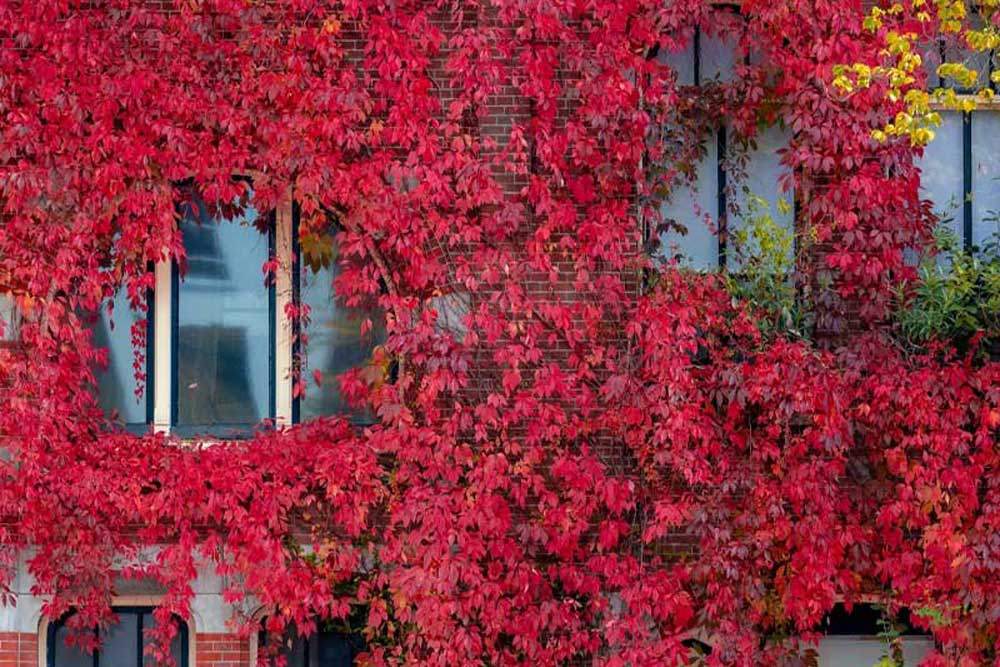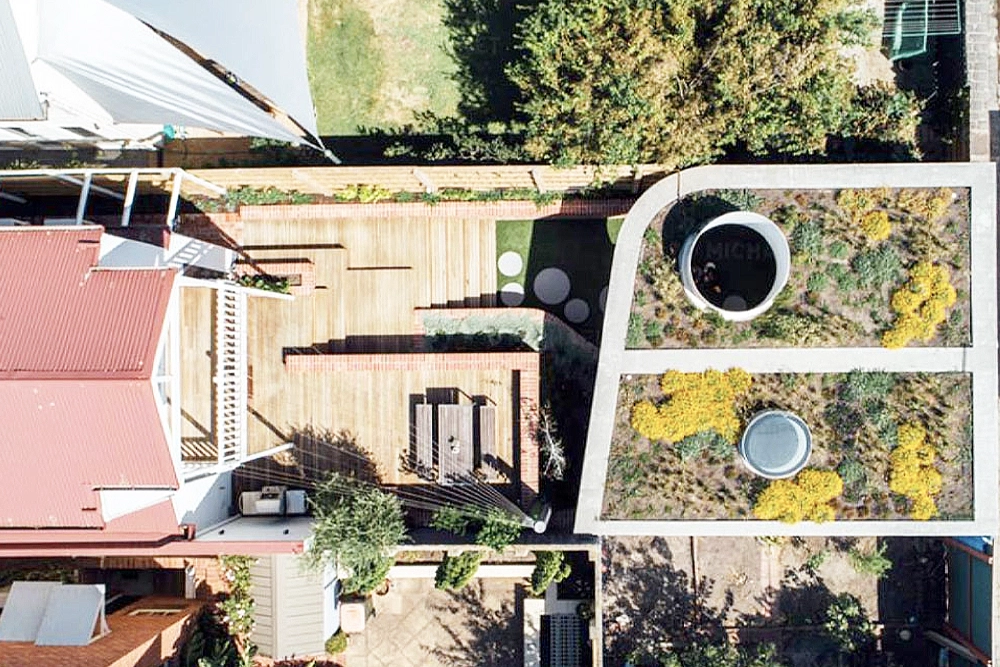Autumn in Melbourne is an excellent time for planting, offering cooler temperatures, increased rainfall and ideal conditions for plant establishment before winter. Whether adding new trees, shrubs or flowers, the season provides an opportunity to set your garden up for success in Melbourne’s temperate climate. In this Guide to Autumn Planting in Melbourne, I’ll share my top plant recommendations that bring vibrant autumn colours through foliage and blooms, why autumn is the perfect time to plant, and how to prepare your soil for optimal growth.
Planting for Autumn Colour: Foliage and Blooms
Autumn is a beautiful season, bringing stunning colour changes to deciduous trees and shrubs before they shed their leaves. While not everyone has space for large trees like oaks and elms, many smaller trees and shrubs can add seasonal colour to your garden.
Small Trees and Shrubs for Autumn Colour
- Cercis chinensis ‘Avondale’ (Redbud) – This small tree is one of our top choices for courtyards, having featured in many of our projects. It offers lush green foliage from spring to summer, transitioning to a warm yellow in early autumn.
- Acer palmatum (Japanese Maple) – Japanese maples are a popular choice for autumn colour, but it’s important to consider the specific shade before selecting one. They come in a variety of colours, with some, like Acer ‘osakazuki’, turning bright red, others, such as Acer ‘senkaki’, turning yellow, and Acer palmatum dissectum developing deep crimson tones.
- Euonymus alatus (Winged Spindle Tree) – A well-known species in English gardens, this shrub or small tree transforms into a brilliant red in autumn.
- Hydrangea quercifolia (Oak Leaf Hydrangea) – Unlike many hydrangeas prized for their flowers, the oak leaf hydrangea is valued for its seasonal foliage. It changes colour throughout autumn and thrives in shaded areas, making it an excellent choice for planting under trees.
- Parthenocissus sp. (Climbing Vines) – Boston Ivy (Parthenocissus tricuspidata) and Virginia Creeper (Parthenocissus quinquefolia) are excellent for covering vertical surfaces. These self-climbing vines require no trellis, making them ideal for narrow laneways or fences. In autumn, their leaves turn a rich red colour.
- Carpinus betulus (European Hornbeam) – Is a versatile tree that can be grown as a hedge or a small feature tree. Its dense foliage turns vibrant shades of yellow to orange in autumn. This hardy tree is relatively easy to shape, making it an excellent choice for formal hedging or sculpted garden designs.
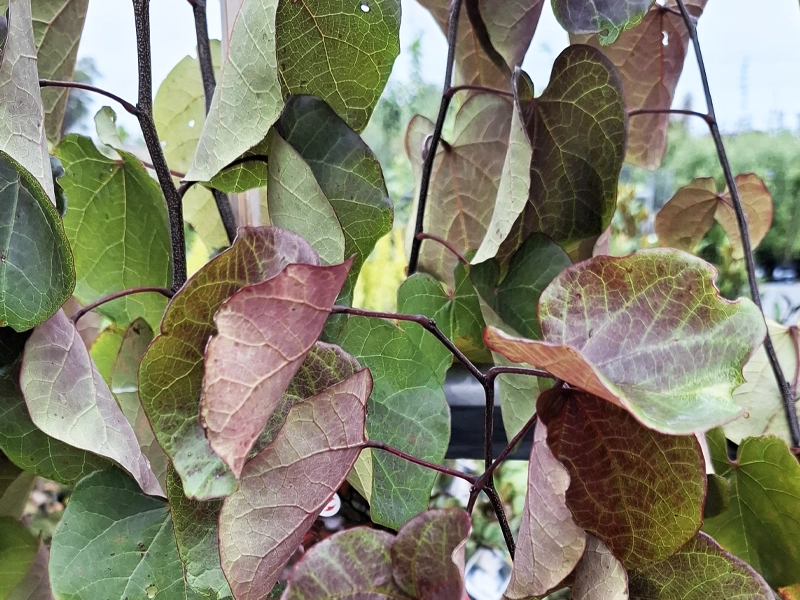
Cercis chinensis ‘Avondale’ (Redbud)
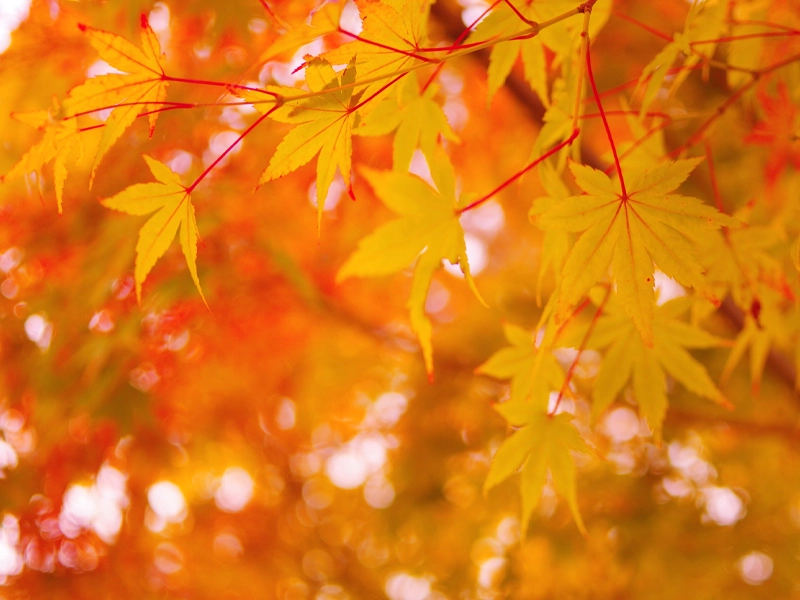
Acer palmatum (Japanese Maple)

Euonymus alatus (Winged Spindle Tree)

Hydrangea quercifolia (Oak Leaf Hydrangea)
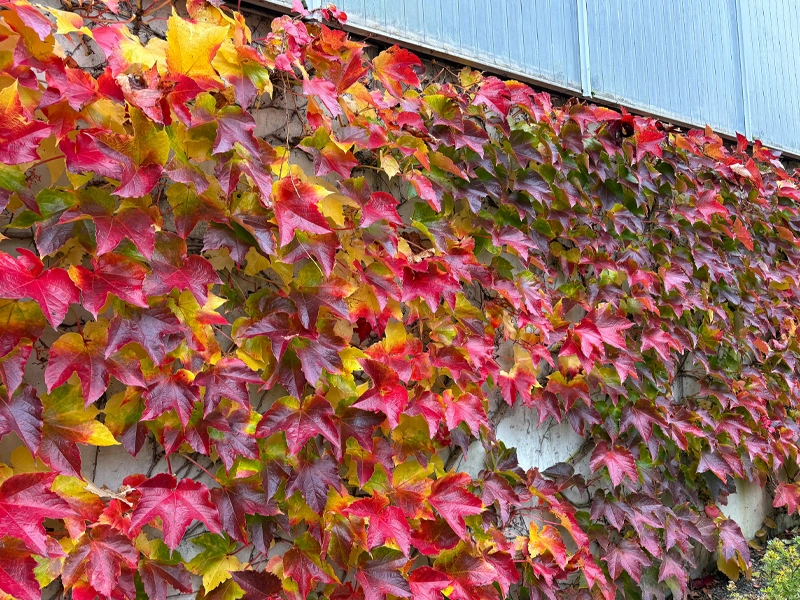
Parthenocissus sp. (Climbing Vines)

Carpinus betulus (European Hornbeam)
Autumn – Flowering Plants
Beyond foliage, many plants bloom beautifully in autumn, with some flowering well into winter. Here are a few easy-to-grow options:
- Nerine sp. –These hardy bulbs produce clusters of pink, red, or white flowers in autumn and require minimal watering compared to many other perennials. Over time, they multiply underground, making them a low-maintenance and reliable choice for rockery landscapes.
- Dahlia sp. – A classic English garden flower, dahlias bloom from summer through autumn. Regular deadheading encourages continuous flowering.
- Cyclamen hederifolium sp. – A hardy plant that thrives in shady spots, producing delicate flowers from late summer into autumn.

Nerine sp
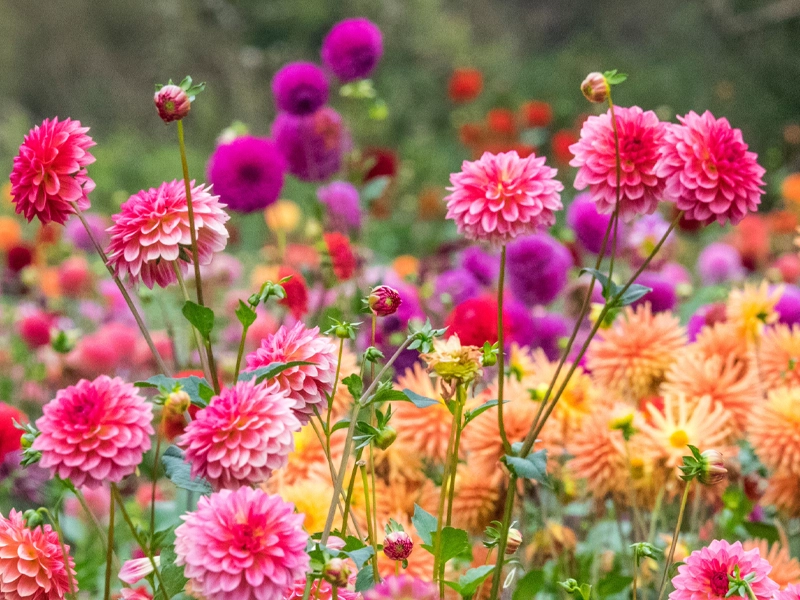
Dahlia sp
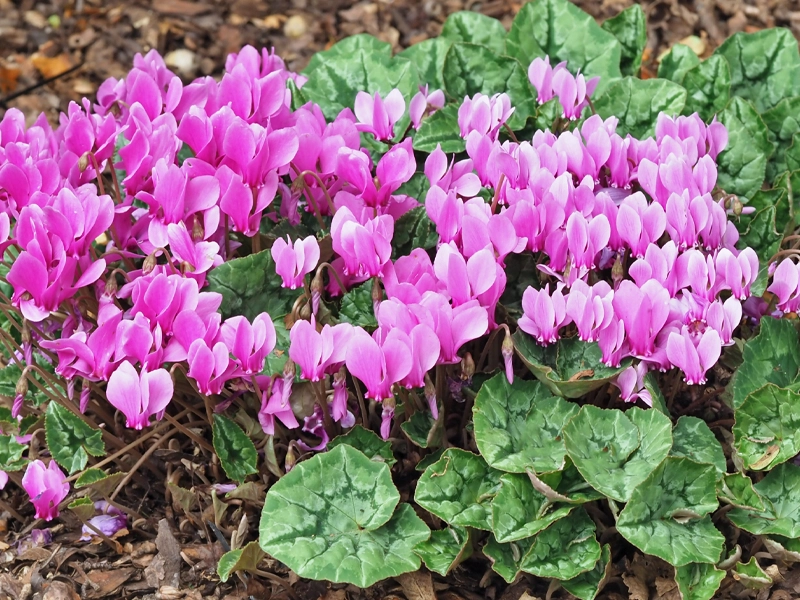
Cyclamen hederifolium sp
Other Reliable Autumn Flowers
- Sedum ‘Autumn Joy’ (Stonecrop) – Produces clusters of pink flowers that stand out, especially in mass plantings.
- Eriocapitella hupehensis formerly Anemone hupehensis (Japanese Windflower) – Comes in pink and white varieties, with delicate blooms, that move in the wind.
- Chrysanthemum ‘Snow Dome’ – Starts flowering in April, forming clusters of creamy white flowers that last for weeks.
By selecting a mix of deciduous trees, shrubs, and flowering plants, you can bring vibrant autumn colour into your garden and extend seasonal interest well into the cooler months.
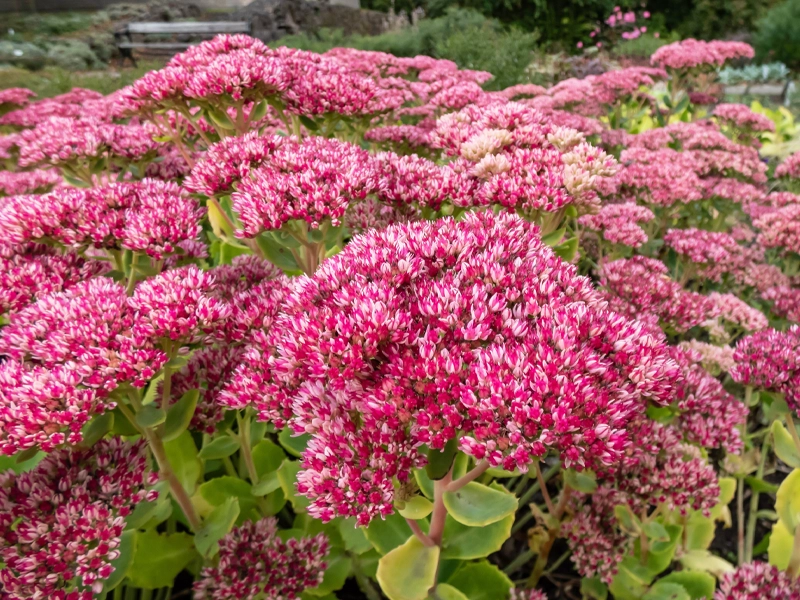
Sedum ‘Autumn Joy’ (Stonecrop)
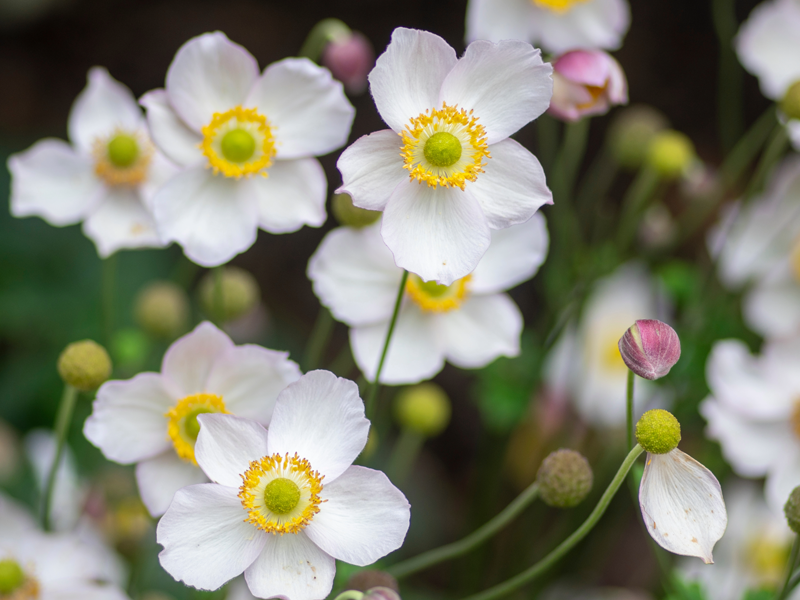
Eriocapitella hupehensis (Japanese Windflower)
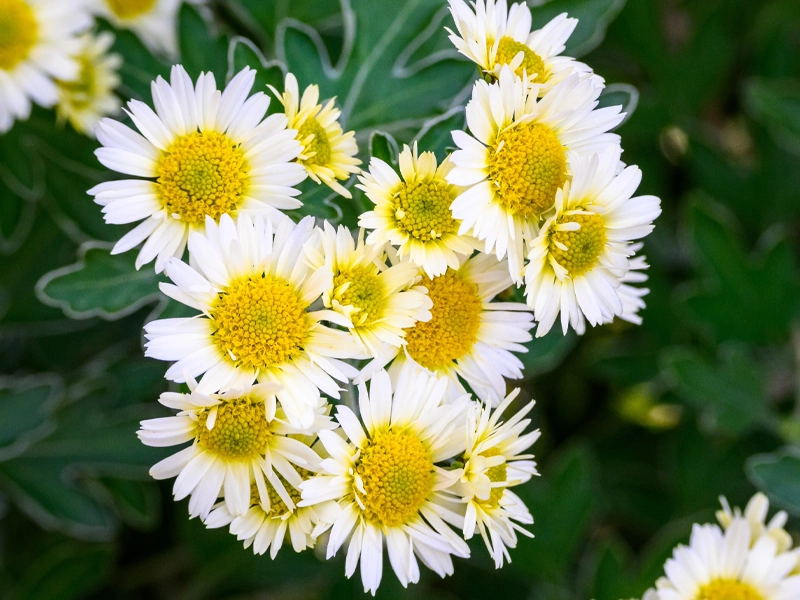
Chrysanthemum ‘Snow Dome’
Why Autumn is a Great time to Plant in Melbourne
Autumn provides the perfect balance of conditions to support strong plant establishment. By taking advantage of these conditions, gardeners can ensure their plants have a strong foundation before winter dormancy and the rapid growth of spring. Here are a few reasons why autumn is an excellent time to plant in Melbourne:
- Cooler Temperatures – With summer’s extreme heat behind us, plants experience less stress and are more likely to establish successfully without the risk of heat damage.
- Increased Rainfall – Melbourne’s autumn months typically bring more consistent rainfall, reducing the need for frequent watering.
- Stronger Root Growth – Plants focus on root development during autumn, ensuring they are well-established before spring’s growing season.
- Reduced Pest Activity – Common garden pests, such as aphids and caterpillars, become less active in autumn, giving plants a better chance to establish without damage.
- Less Competition from Weeds – Summer-growing weeds slow down in autumn, allowing new plantings to establish without excessive competition for nutrients and water.
- Better Working Conditions – Autumn’s mild weather makes gardening tasks more enjoyable and less physically demanding.
- Longer Establishment Period – Planting in autumn gives plants months to establish before the extreme heat of summer returns, increasing their survival rates.
Soil Preparation for Autumn Planting in Melbourne
Proper soil preparation is essential for successful autumn planting. Ensuring that the soil is healthy, well-drained, and rich in nutrients will give new plants the best chance to establish strong roots before winter. Taking the time to improve soil structure, manage pH levels, and apply mulch will support plant growth and long-term garden health.
- Clear and Weed – Remove weeds and debris to reduce competition for nutrients and water.
- Improve Soil Structure – Soil conditions vary, so it’s best to enrich sandy soils with compost or well-rotted manure to improve moisture retention and nutrient content. For heavier clay soils, adding organic matter helps enhance drainage and soil structure.
- Check pH Levels – Most plants prefer a slightly acidic to neutral pH (6.0–7.0); use a soil test kit and adjust as needed with lime (to raise pH) or sulphur (to lower pH).
Mulch – Apply mulch around new plantings to retain moisture, suppress weeds, and regulate soil temperature.
Watering – While rainfall is more reliable in autumn, newly planted trees, shrubs and flowers should be watered deeply to help roots establish before winter.
Autumn offers great conditions to establish a thriving garden in Melbourne. By selecting the right plants, preparing the soil, and taking advantage of the season’s cooler temperatures and increased rainfall, gardeners can set their landscapes up for long-term success. With a little planning and care, autumn planting ensures strong root development and a vibrant garden ready to flourish in spring.

